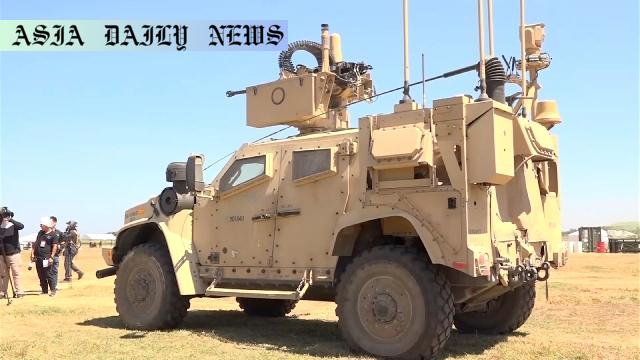Drone Interception: The US and Philippines conduct historic joint drone interception drills, showcasing cooperation and military preparedness.

Background of the Drill and Joint Cooperation
On the shores of the South China Sea, the United States and the Philippines marked a historical milestone by conducting their first joint drone interception exercises. Held on the western coast of Luzon Island, these drills commence amidst heightened maritime tensions in the region. This landmark activity holds added significance, occurring as part of a broader military exercise involving over 14,000 personnel from both nations as they seek to deepen defense integration. Through a synchronized effort, the drills deployed a sophisticated air defense mechanism, combining American technological advances and local expertise to counter low-altitude drones effectively.
The capabilities demonstrated during the exercise illustrate how the union of technological innovation and longstanding alliances can address mutual security concerns. As the Philippines faces increasingly complex defense exigencies, the incorporation of the US’s modern mobile air defense systems, including autocannons and Stinger missiles, represents a step forward toward achieving regional stability. The tangible impact of this collaboration is evident not only in the bolstering of both militaries’ aerial interception techniques but also in their ability to respond decisively to potential threats.
Strategic Implications in the South China Sea
Examining the strategic scope of these drills reveals broader intentions, especially against the backdrop of China’s expanding influence in the South China Sea. Both countries are seeking to reaffirm their commitment to regional peace and resilience against aggression. The drills underscore the geographical significance of the northern Philippine region, particularly its proximity to Taiwan, highlighting how this partnership serves as a deterrent to territorial encroachment.
Military drills like these not only amplify the readiness of allied forces but also serve as a clear message to adversarial nations. While cooperation in operational technology stands at the forefront, the symbolic gestures behind these exercises reinforce the essentiality of alliances in de-escalating conflict. With air defense systems and surface-to-air missiles tested under real-time conditions, this initiative elevates both countries’ strategic assets and fortifies their interdependence.
Technological Innovation and Future Cooperation
The deployment of cutting-edge mobile defensive artillery and surface-to-air missile systems signals an enduring move toward modernizing allied forces. The drills have further validated the compatibility of US and Philippines military systems, demonstrating that technology-driven coordination can successfully thwart advancing threats like low-altitude drones. Reporters present at the exercises witnessed impressive performances of the autocannon and Stinger missiles, significantly enhancing confidence in the maneuver’s operational preparedness.
Looking forward, the joint exercises are a strong indicator of progressive future collaborations. Scheduled till May 9, upcoming sessions will test landing drills on remote islands, further expanding the defense sphere. By addressing immediate and potential challenges through technological integration and mutual trust, these exercises lay a durable foundation for sustained security partnerships in the Asia-Pacific region.
Commentary
The Significance of US-Philippines Defense Synergy
In an era of interconnected security challenges, initiatives like the US-Philippines joint drone interception drills resonate far beyond their immediate context. Such exercises are testaments to the power of enduring partnerships tailored toward collective security interests. By undertaking technologically sophisticated training in a geopolitically-sensitive region, both nations have not only fortified their defenses but also set a precedent for regional allies to follow suit.
Broader Implications for Regional Stability
The timing and setting of these joint maneuvers could not be more critical, given the maritime complexities in the region. As China’s presence continues to cast shadows over the South China Sea, it becomes imperative to project a unified stance. To this end, the collaborative efforts of the United States and the Philippines reverberate as a powerful reminder that no single nation can disrupt international law with impunity.
A Message of Unity and Preparedness
More than a defense drill, this exercise is a compelling message of unity. It underscores that the evolving nature of warfare demands advanced preparation and cooperative action. Whether through missile interceptions or civil defense adaptations, the enduring message is clear: allies who train together, thrive together. This synergy encapsulates hope and readiness amid uncertain global dynamics.


